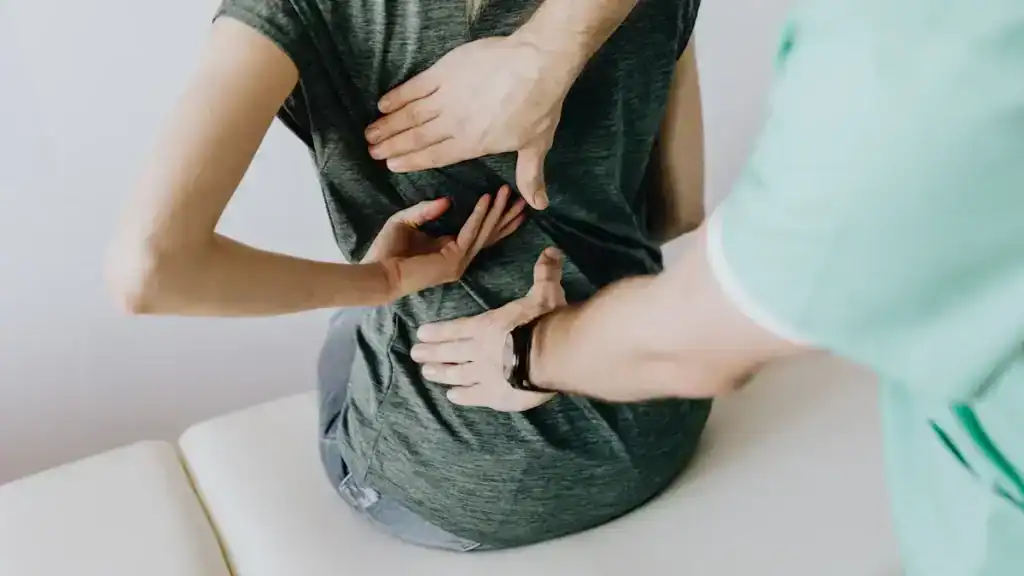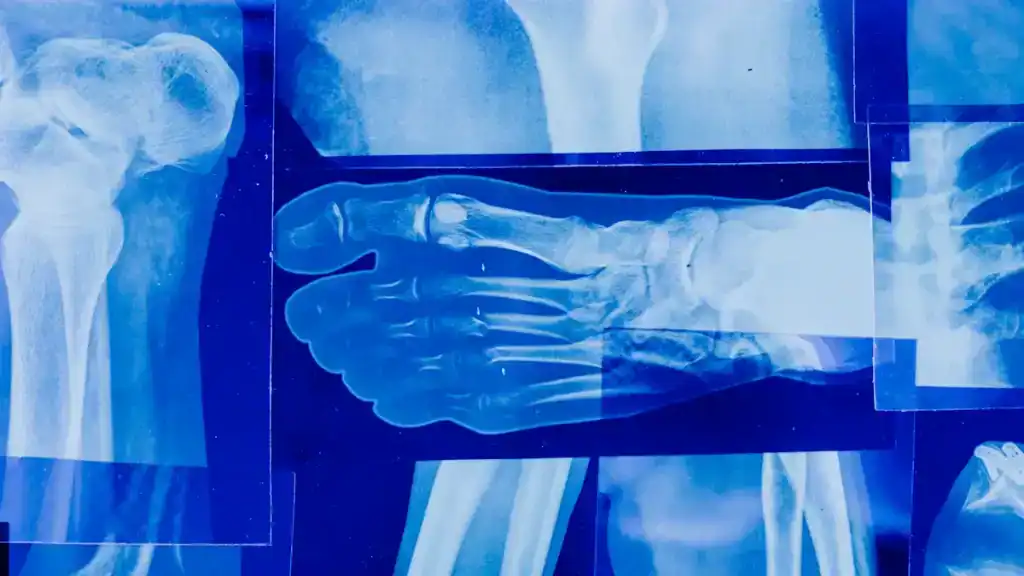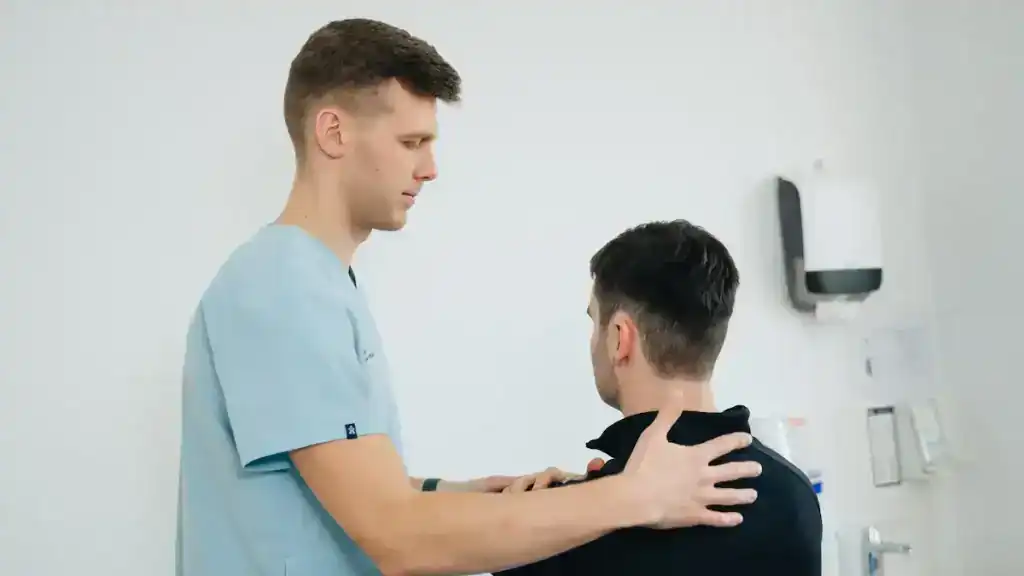
You often experience lower back pain. Not knowing its causes can be very frustrating. This blog introduces a lower back pain chart. It is a helpful tool for your initial self-assessment.
This chart offers rapid identification and guidance. It does not replace professional medical advice. Our goal is to empower you. You will better understand your back pain. You will also know when to seek help for your pain in the lower back.
Key Takeaways
Understand your back pain. Acute pain is short-term. Chronic pain lasts longer than three months.
Pinpoint your pain location. Pain in your lower back or sacral area can show different problems.
Recognize serious symptoms. Seek immediate medical help for red flag signs like sudden weakness or loss of bladder control.
Try home remedies first. Use cold or heat packs. Do gentle stretches. Over-the-counter medicines can help.
See a doctor for persistent pain. Get professional help if your pain does not improve or if you have radiating pain.
Understanding Back Pain Causes: Acute vs. Chronic
You experience different types of back pain. Knowing the difference helps you understand your condition. We classify back pain based on how long it lasts. This helps identify the underlying back pain causes.
Most lower back pain, about 97%, comes from mechanical issues. These issues often improve quickly.
Acute Lower Back Pain
Acute back pain starts suddenly. It usually lasts a short time. This type of back pain often resolves on its own. You might feel acute back pain for a few days or weeks. Many people recover quickly.
For example, the median duration for an acute back pain episode is just 5 days. About 70% of episodes recover within one week. Over 90% of episodes improve within six weeks. Sometimes, acute back pain can last a bit longer, becoming subacute back pain. Subacute back pain typically lasts between 6 weeks and 3 months. These causes often involve muscle strains or minor injuries.
Chronic Lower Back Pain
Chronic back pain lasts much longer. Doctors often define chronic back pain as pain lasting for three months or more. This persistent pain can be more complex. It might not respond as quickly to initial treatments. Chronic back pain can sometimes be recurrent back pain. This means it comes and goes over time.
Pinpointing Lower Back Pain Location

You can identify potential back pain causes by knowing where your pain occurs. A back pain location chart helps you understand what might be happening. Your lower back has two main areas where pain often starts: the lumbar spine and the sacral region.
Lumbar Spine Pain
The lumbar spine is your lower back. It includes five large bones that support your upper body. Pain in this spine area can feel like a dull ache or a sharp, shooting sensation. You might experience radiating pain, which travels down your leg. Sometimes, you feel sudden weakness in your legs.
This can happen if conditions like sciatica or spinal stenosis compress your nerves. In rare cases, you might have incontinence or numbness in your groin or glutes. These are serious signs of nerve or spine issues.
Common causes of lumbar spine pain include muscle strains or ligament sprains. You can also experience degenerative conditions like osteoarthritis or a herniated disc.
A pinched nerve or spinal stenosis can also cause discomfort. Injuries such as fractures or spondylolisthesis affect your spine. Sciatica, which is nerve pain, often starts from problems in your lumbar spine.
Sacral Region Pain
The sacral region sits below your lumbar spine. It includes the sacrum, a triangular bone at the base of your spine, and the sacroiliac (SI) joints. These joints connect your sacrum to your pelvis. Lower back pain is the most common symptom if you have problems with your SI joint.
Sacroiliitis is a common cause of pain in this region. This condition affects your SI joints. Arthritis, such as ankylosing spondylitis, often causes Sacroiliitis. Other inflammatory conditions, like Crohn’s disease, can also lead to this pain.
Pregnancy can cause SI joint pain because hormones make your joints more flexible. Trauma, infection, or the natural aging process can also affect these joints. Understanding these back pain causes helps you describe your symptoms accurately.
Common Lower Back Pain Causes and Symptoms
You want to understand the common causes of your lower back pain. Many different issues can lead to discomfort in your lower back. Some are simple muscle problems. Others involve your nerves or the structure of your spine. Knowing these common back pain causes helps you identify your specific back problems. You can then better describe your back pain symptoms to a doctor.
Muscle and Ligament Issues
Muscle and ligament problems are very common causes of back pain. These issues often result from everyday activities or minor injuries. You might experience a muscle strain, spasm, tear, or a ligament sprain. These conditions are usually not serious. They often improve with rest and self-care.
When you have a muscle strain or ligament sprain, you might notice several symptoms:
Pain worsens when you move.
You feel muscle cramping or spasms. These are sudden, uncontrollable muscle contractions.
Your joint has decreased function or range of motion. You might find it hard to walk, bend forward or sideways, or stand straight.
Sometimes, you feel a pop or tear when the injury happens.
You might see bruising if small blood vessels are damaged.
Swelling can appear around the injured area.
The area feels tender when you touch it.
Muscle weakness can make movements difficult.
Recovery times for these issues vary. Mild strains and sprains (Grade 1) usually see pain subside within one to two weeks. Full healing often takes four to six weeks. More severe strains or sprains can take longer to heal. Sometimes, extensive tissue damage may even require surgery.
Nerve and Disc Conditions
Problems with your nerves and the discs in your spine can cause significant back pain. These conditions often involve pressure on nerves.
Sciatica: This condition involves your sciatic nerve. You feel pain that starts in your lower back. It then travels into your buttock and down the back of one leg. This pain can reach your foot. You might describe it as sharp, shooting, or burning.
You can also experience numbness, tingling (like pins and needles), or muscle weakness in the affected leg or foot. Sciatica differs from general back pain. General back pain usually stays in your back. Sciatica affects your lower extremities because a nerve is involved. The pain often feels better when you lie down or walk. It can worsen when you stand or sit. Coughing or sneezing can also make it worse.
Herniated Disc: A herniated disc happens when the soft center of a spinal disc pushes through its tougher outer layer. This can press on nearby nerves. Many factors contribute to a herniated disc. Aging naturally degenerates disc material. Traumatic injuries, like falls, can cause it. Repetitive motions, improper lifting, and prolonged sitting also increase your risk. Being overweight or smoking are other causes. Symptoms of a herniated disc in your lower back often include:
Sharp pain that shoots down one side of your buttocks into your leg and sometimes your foot. This is often sciatic nerve pain.
You feel tingling or numbness in your legs or feet.
Your legs or feet might feel weak.
Pain often worsens after standing or sitting. It can also get worse at night, when you sneeze, cough, or laugh. Bending backward or walking more than a few yards can also increase pain.
Degenerative Conditions
Degenerative conditions develop over time. They involve the wear and tear of your spine.
Degenerative Disc Disease (DDD): This condition means your spinal discs are breaking down. You might feel moderate, continuous back pain. This pain is typically a dull ache. It can spread to your buttocks, groin, and upper thighs. You may have occasional pain flare-ups. These can be severe and sudden. They might temporarily reduce your mobility. The area around the degenerated disc can feel tender to touch. If a nerve root gets pinched, you might feel numbness, weakness, or sharp, shooting pains in your buttocks, hips, or the back of your leg. This pain usually does not go below your knee. You might also feel sudden weakness or instability in your lower back.
Spinal Stenosis: This condition involves the narrowing of the spaces within your spine. This narrowing puts pressure on the nerves that travel through your spine. Symptoms often develop slowly. You might experience lower back pain. A burning pain or ache can radiate down your buttocks and into your legs. This pain worsens with standing or walking. Leaning forward often makes it feel better. You might also feel numbness, tingling, or cramping in your legs and feet. These sensations can intensify when you stand or walk. Your legs and feet might feel weak. Severe stenosis can even affect your bowel, bladder, and sexual function.
Using Your Back Pain Chart for Self-Assessment
You can use a lower back pain chart to understand your symptoms. This chart helps you identify potential issues. It guides you in matching your back pain symptoms to possible conditions. This self-assessment helps you decide your next steps.
| Symptom / Finding | Possible Cause | Key Characteristics | What to Do |
|---|---|---|---|
| Pain after lifting, twisting, or exercise | Muscle Strain / Sprain | Aching pain, worsens with movement, improves with rest | Apply ice/heat, gentle stretching, avoid heavy lifting, OTC pain relief if needed |
| Pain that shoots down one leg | Sciatica / Nerve Compression | Sharp or burning pain radiating down the leg; numbness or tingling | Rest, avoid prolonged sitting, gentle nerve-glide stretches; see a clinician if severe |
| Pain that worsens when bending forward | Herniated Disc | Sharp lower back pain, worsening when sitting, coughing, or lifting | Avoid heavy lifting, use proper posture; physical therapy; medical evaluation recommended |
| Stiffness and pain worse in the morning | Degenerative Disc Disease / Arthritis | Gradual onset, stiffness improves with movement | Regular exercise, anti-inflammatory routine, physical therapy; long-term management |
| Pain relieved by sitting or leaning forward | Spinal Stenosis | Leg weakness or numbness when walking; relief when resting or bending forward | Low-impact exercise, physical therapy; medical evaluation if severe |
| Sudden severe pain after injury (fall/car accident) | Fracture | Sharp unbearable pain, inability to move comfortably | Seek immediate medical care / X-ray evaluation |
| Back pain with fever, weight loss, or night sweats | Infection or Cancer (rare) | Constant pain not relieved by rest; systemic symptoms | Urgent medical evaluation needed |
| Pain with loss of bowel/bladder control or leg weakness | Cauda Equina Syndrome (emergency) | Numbness around groin, severe weakness | Go to emergency room immediately |
Symptom Matching Steps
Follow these steps to interpret your symptoms:
Identify Pain Type: First, determine if your pain is acute or chronic. Acute pain is sudden and short-lived. Chronic pain lasts three months or more.
Pinpoint Location: Next, locate where your pain occurs. Is it in your lumbar spine or the sacral region? Pain location helps narrow down the causes.
Match Symptoms: Compare your specific symptoms to the conditions discussed earlier. For example, does your pain shoot down your leg? This might suggest sciatica. Do you feel a dull ache that spreads to your buttocks? This could indicate degenerative disc disease.
Consider Activities: Think about what makes your pain better or worse. Does walking relieve it? Does sitting make it worse? These details provide important clues.
Recognizing Red Flags
Some back pain symptoms require immediate medical attention. You must recognize these “red flags.” They signal a potentially serious condition.
Sudden, Severe Pain: You experience pain that is sudden, very intense, or worsens quickly. This pain does not improve with rest.
Numbness or Weakness: You feel numbness, tingling, or weakness in your legs or arms. This can indicate nerve involvement.
Loss of Bowel or Bladder Control: You suddenly cannot control your bladder or bowels. This is a critical sign of cauda equina syndrome. Seek emergency care immediately.
Fever or Infection Signs: Your back pain comes with a fever. You might also notice localized tenderness, swelling, or warmth. These signs suggest a possible spinal infection.
Unexplained Weight Loss: You lose weight without trying. This, combined with back pain, can point to underlying conditions like spinal tumors.
Trauma: Your pain follows a fall, sports injury, or car accident.
Age: You are under 18 or over 50 and experience new, severe pain.
History: You have a history of cancer, recent surgery, or immunodeficiency.
If you experience any of these red flag symptoms, you must see a doctor right away. Do not delay seeking professional medical advice.
Back Pain Treatment and Professional Help

You want to find effective ways to manage your back pain. This section offers immediate self-care tips. It also provides clear guidelines on when to consult a doctor. Remember, a professional diagnosis always starts with your history and a physical exam.
Immediate Relief Strategies
You can take several steps at home for immediate pain relief. These strategies often help with acute back pain.
Temperature Therapy: You can apply cold packs for the first 48 hours. This helps reduce inflammation and numb the pain. After 48 hours, switch to heat therapy. A heating pad or warm bath can relax your muscles and improve blood flow.
Gentle Movement: Avoid staying in bed too long. Engage in light activities like short walks. This helps you maintain mobility and promotes blood flow. Complete bed rest can actually worsen your pain.
Specific Gentle Stretches: You can try gentle stretches to improve flexibility.
Knee-to-chest stretch: This stretches your lower back and glutes.
Cat-cow stretch: This improves spinal flexibility.
Child’s pose: This helps decompress your lower back. Perform these stretches slowly. Stop if you feel any sharp pain.
When to See a Doctor
Sometimes, home treatment is not enough. You need to know when to seek professional help. Your doctor can provide a proper diagnosis and a personalized treatment plan.
You should consult a doctor if you experience any of these symptoms:
Persistent Pain: Your back pain does not improve after a week of home care. Or, you have severe pain that disrupts your sleep or worsens when you lie down.
Radiating Pain: Pain extends down one or both legs, especially below the knee. This often points to nerve root issues.
Numbness, Tingling, or Weakness: You feel these symptoms in your back or legs along with pain. This suggests possible nerve damage.
Pain After Trauma: Your back pain develops after an accident, like a car crash or a bad fall.
Loss of Bowel or Bladder Control: You suddenly cannot control your bladder or bowels. This is a serious sign. It could indicate a condition called cauda equina syndrome. Seek emergency care immediately.
Unexpected Weight Loss: You lose weight without trying, and you also have back pain. This may signal a serious underlying condition.
Fever with Back Pain: You have a fever (over 100.4 F for more than two days) along with back pain. This could indicate an infection.
Ineffective Home Treatments: Self-care, rest, ice packs, and over-the-counter medicines have not improved your back pain after four weeks.
When you see a healthcare professional, they follow specific steps to diagnose your condition.
Medical and Family History: Your doctor will ask about your medical background and family history. This helps identify potential causes like injuries or underlying conditions. They will ask about your pain’s characteristics, location, and severity. They will also ask what makes it better or worse.
Physical Exam: Your doctor will examine your spine and posture. They will assess how movement affects your pain. They might ask you to bend or lift your legs. They will also test your reflexes, muscle strength, and sensation.
Imaging and Blood Tests: These tests are not always necessary. Doctors order them to rule out specific conditions or confirm a diagnosis.
X-rays: These detect broken bones, age-related changes, or spinal alignment issues.
MRI (Magnetic Resonance Imaging): This visualizes soft tissues like discs, ligaments, and nerve roots.
CAT (Computerized Axial Tomography) scans: These create 3D views of your back. They diagnose problems in your spinal canal and surrounding tissues.
Electrophysiological tests (e.g., EMG): These measure electrical activity in your muscles. They check for muscle and nerve problems.
Bone scans: These identify fractures and infections using radioactive materials.
Blood tests: These pinpoint inflammatory or medical disorders that could cause your pain.
These diagnostic steps help your doctor understand your condition. They then create the best treatment plan for you.
Your lower back pain chart is a valuable tool. It helps you quickly understand your symptoms. You learn to recognize important signs. This helps you decide when to use self-care. You also know when to see a doctor. Remember, this chart guides you. A healthcare professional provides a full diagnosis. They create a personal treatment plan. Manage your health actively. Consult a doctor promptly for lasting relief.




